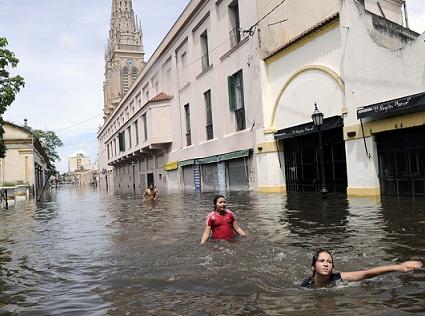July 18 2016- Forbes article
Almost all U.S. publicly traded companies face risk either from climate change itself or from the changes needed to fend it off, experts agreed Monday at the S&P Global offices in New York—but few companies have warned their investors.
Some executives seem to be in denial, while other executives may not have any idea how to assess climate risk, according to panelists convened by the international Task Force on Climate-related Financial Disclosures.
“If you look at the boards maybe they don’t have the expertise to assess climate risk and opportunities,” said Diane Larsen, Americas assurance markets leader for Ernst & Young. ”So then this is about good governance. How do we get that expertise, how do we bring it on board?”
The Sustainability Accounting Standards Board (SASB) chaired by Michael Bloomberg reported in December that 93 percent of American public companies face some degree of climate risk, and only 12 percent have disclosed it.
The SASB report was overlooked by news organizations at the time, perhaps with so much news breaking from the Paris Climate Conference. Bloomberg himself was in Paris, announcing the formation of the Task Force on Climate-related Financial Disclosures, which he also chairs.
“Make no mistake, climate change means business,” wrote SASB CEO Jean Rogers. “It affects 93 percent of the U.S. equity market, representing $33.8 trillion market capitalization. As we’ve said before, because climate risk is systemic and embedded across a portfolio, investors can’t diversify away from it.”
Those 93 percent of companies could face “transition risks” as the world shifts to a low-carbon economy, including declining revenues, stranded assets, asset write-downs,impairment charges, and changes in cash flow.
To prepare for those risks, investors need information on companies’ future emissions profiles, capital-expenditure plans and risk-management plans, the panelists said. Investors need to know who is responsible for assessing risk at each company, how they’re doing it, and how far they’ve gotten.
Mike Wilkens of S&P called on companies to prepare carbon stress tests, calculating revenues and cash flows under different emissions limits and carbon prices.
Among the companies that seem to be in denial, Wilkens singled out American oil majors. Unlike their European counterparts, some American oil companies continue to predict, at least publicly, that oil demand will continue to grow, he said.
“I’m not entirely sure what planet they’re living on because clearly there is a second- or possibly third-generation renewables revolution happening at the moment,” said Wilkins, the global head of environmental and climate risk research for S&P Global.
If the world is to limit global warming to 2ºC, then fossil fuel demand has to fall, added Mark Lewis, the head of European utilities equity research for Barclays.
“Over the next 25 years the global fossil fuel industry in our view would stand to lose $33 trillion of revenue compared with a business-as-usual scenario,” Lewis said, citing aBarclay’s analysis that also came out last December. Most of those lost revenues, he added, are oil revenues.
The use of fossil fuels for energy, transportation and industry accounts for about 70 percent of anthropogenic greenhouse gas emissions, Lewis said, so those sectors seem most vulnerable.
But climate risk is spread across the market, can come from unforseen directions, including storm damage and coastal flooding, and companies outside of the energy sector may be less prepared to assess it.
“I think the first step, in terms of baby steps, is to acknowledge the possibility that there is a risk or an opportunity out there—there could be opportunities,” said Diane Larsen, “and then bake that into a process, you know, do an assessment, figure out what it means.
“There could be real significant financial impact to the organization, and the governance structure of that company needs to really understand that impact and when will that impact come home to roost.”
If the companies don’t do it, the panel suggested, it will get done another way.
“If you don’t use a reasonable assumption for your climate policies and your climate risk, then the market will do it for you,” Lewis said. ”And then ultimately you’re going to be at the mercy of the market, which most companies don’t want to be.”
The Dutch pension firm PGGM is shifting $20 billion in assets based on four “megatrends” that it believes will affect the value of companies going forward: climate change, water security, food security, and access to health care.
“We have started divesting from those companies with the highest carbon footprint,” said Eloy Lindeijer, PGGM’s chief of investment management, “and then reinvesting those funds on a country- and sector-neutral basis with those companies that have a better performance in that field.”
By Jeff McMahon, based in Chicago. Follow Jeff McMahon on Facebook, Google Plus,Twitter, or email him here.
